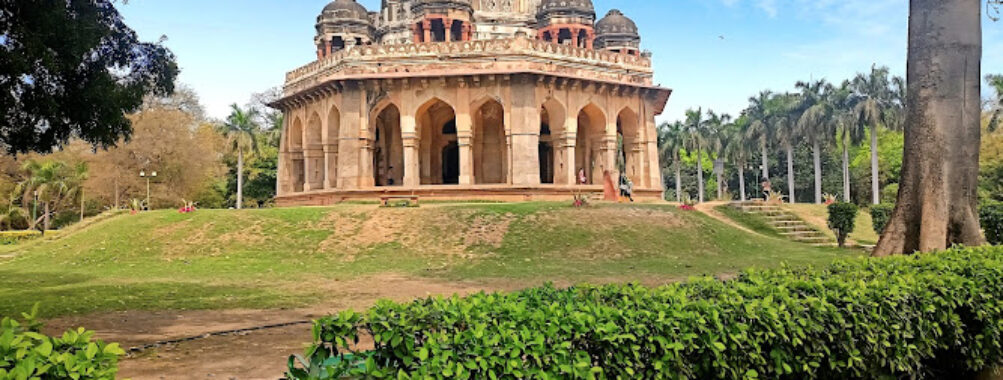
Sikandar Lodi Tomb
Table of Contents
Location
Places to Stay Near Sikandar Lodi Tomb"Great place with trees , plants and many more things"
Find and Book a Tour
Explore More Travel Guides
No reviews found! Be the first to review!
Sikandar Lodi Tomb stands as a magnificent example of early Indo-Islamic architecture in New Delhi’s historic Lodhi Gardens, serving as the final resting place of Sultan Sikandar Lodi, who ruled the Delhi Sultanate from 1489 to 1517. This architectural masterpiece represents a crucial transitional period in Indian Islamic architecture, bridging the gap between earlier Sultanate monuments and the later Mughal architectural traditions. The tomb’s design and construction techniques influenced subsequent monuments throughout the region, making it an essential destination for travelers interested in India’s rich architectural heritage and medieval history.
Description
The tomb showcases a distinctive rectangular structure topped by a prominent central dome surrounded by smaller domes and intricate arched verandas that create a harmonious architectural composition. The building demonstrates sophisticated construction techniques using red sandstone and decorated plaster work that has survived over five centuries of weathering. The architectural elements combine Islamic geometric patterns with local Indian craftsmanship traditions, creating a unique aesthetic that characterizes the Lodi dynasty’s architectural legacy.
The surrounding Lodhi Gardens provide a serene parkland setting that enhances the tomb’s historical significance while offering visitors peaceful walking paths and landscaped areas for reflection and photography. The gardens themselves date from the 1930s and were designed by Lady Willingdon to preserve and showcase the area’s medieval monuments within a modern recreational space. This integration of historical preservation with contemporary landscape design creates an exceptional urban oasis in the heart of New Delhi.
Key Features
- Early 16th-century Indo-Islamic architectural masterpiece
- Distinctive rectangular structure with prominent central dome
- Intricate stone ornamentation and geometric decorative patterns
- Historical significance as Sultan Sikandar Lodi’s mausoleum
- Beautiful integration of Islamic and Hindu architectural elements
- Peaceful setting within the expansive Lodhi Gardens
- Excellent preservation showcasing medieval construction techniques
- Strategic location for exploring other historical monuments nearby
Best Time to Visit
The optimal time to visit Sikandar Lodi Tomb is during Delhi’s cooler months from October through March, when walking through the gardens and exploring the monument is most comfortable. Early morning and late afternoon hours provide the best lighting for photography and comfortable temperatures for extended exploration. The monsoon season from July to September can make the gardens particularly lush and beautiful, though visitors should be prepared for occasional rainfall that may affect outdoor activities.
How to Get There
Lodhi Gardens and the Sikandar Lodi Tomb are easily accessible via Delhi Metro, with Khan Market station on the Violet Line being the closest, approximately a 5-minute walk away. Multiple bus routes serve the area, connecting the gardens to all parts of Delhi. Auto-rickshaws, taxis, and ride-sharing services provide convenient transportation, with several entry gates to the gardens offering flexible access points. The central location makes it easy to combine visits with nearby attractions such as India Gate, Humayun’s Tomb, and the National Museum.
Tips for Visiting
- Visit during early morning or late afternoon for optimal lighting and comfortable temperatures
- Bring a camera to capture the intricate architectural details and garden landscapes
- Wear comfortable walking shoes suitable for garden paths and monument exploration
- Allow 1-2 hours to fully explore the tomb and surrounding gardens
- Combine your visit with other monuments in Lodhi Gardens for a comprehensive historical experience
- Pack water and light snacks for extended exploration, especially during warmer weather
- Respect the historical significance of the site and follow preservation guidelines
- Consider hiring a local guide to gain deeper insights into the architectural and historical context